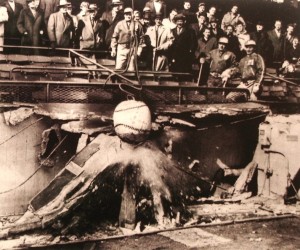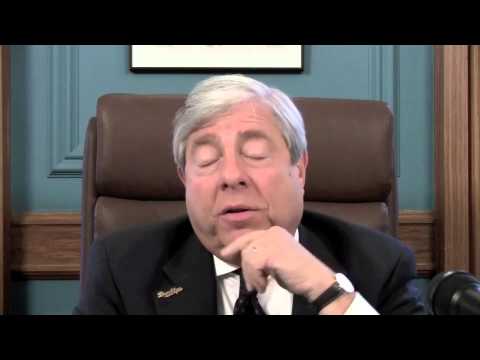
Anyone who has friends and family who grew up in Brooklyn during the late 1940s and 1950s knows that a trip down memory lane isn’t complete until the conversation inevitably turns to the Brooklyn Dodgers. The narrative is fairly straightforward and almost depressingly predictable – diehard fan of arguably baseball’s second-best team for about a decade behind the hated New York Yankees gets his heart broken in 1957 when Dodgers owner Walter O’Malley decides to move the team to California.
That’s not to be glib about any of this, especially since my father is one of those emotionally anguished former Brooklynites. He eventually adopted the Mets as his hometown team in the 1960s, but that’s not to say the Dodgers won’t always be a part of his make-up. When my father found out that my wife and I were moving to Brooklyn a few years ago, he started reminiscing about the church near his house, visits with my grandmother to Coney Island, and summer afternoons at Ebbets Field cheering for the Duke, Pee Wee, Jackie and Campy.
Years after the fact, this “romantic” notion about the Brooklyn Dodgers remains, even though it’s been more than 50 years since they last played a game at Ebbets (and despite the fact that for the bulk of their existence, the Brooklyn Dodgers were a pretty lousy team). There’s clearly a desire on behalf of the Nets to capitalize on this romance, or they wouldn’t be making t-shirts like these that talk about opening night in November being Brooklyn’s “first home game” since 1957. But in this modern era of sports, not to mention the number of ways Brooklyn has dynamically changed since 1957 – is it conceivable for the Nets to not only fill that void left by the Dodgers absence, but to capture that romantic “magic” that seemed to make Dem Bums America’s only true “hometown” team?
So much ink and film has been used to discuss the cultural and sociological impacts of the Brooklyn Dodgers and their exodus from New York – including Roger Kahn’s “Boys of Summer,” perhaps the greatest book about baseball that’s been ever written. Another book that I’ve always enjoyed was “The Last Good Season: Brooklyn, the Dodgers and Their Final Pennant Race Together,” by Michael Shapiro, who interestingly enough grew up in Brooklyn in the 1960s and 70s after the Dodgers had already left town. After moving to Brooklyn myself in 2010, one thing that really struck me about some of Shapiro’s anecdotes was how they captured the intimacy between the team and its residents. Most of the Dodgers, including some of their biggest stars, lived right in the Bay Ridge near Shore Road. Kids would ring Pee Wee Reese’s doorbell looking for autographs. The players’ wives would shop at the local stores. The Dodgers weren’t a team representing a major city like the Yankees or the Cubs. They were a neighborhood team consisting of neighborhood people.
I asked Shapiro, who is a professor at Columbia University’s Journalism school, if the Brooklyn Nets could ever have that impact on the community that the Dodgers once had. The answer, unsurprisingly, was not really, though for reasons that are far out of the Nets control.
“The Dodgers were local guys and were very much a ‘Brooklyn’ team,” Shapiro said. “But the Brooklyn in 2012 is not the Brooklyn of 1955. It’s no longer the working class bedroom community to Manhattan.”
Brooklyn today is a “hot” spot (dare we day, “hip?”). Interestingly enough, the current location of the Barclays Center at the corner of Flatbush and Atlantic avenues, is exactly where Dodgers owner Walter O’Malley was looking to build a new baseball stadium. But O’Malley couldn’t get the backing of Robert Moses, a highly influential developer who, depending on who you talk to, is either credited for creating “modern” cities or “urban sprawl.” Regardless, Brooklyn went into a downward spiral after the Dodgers skipped town. Less than a decade later, the Brooklyn Navy Yards closed, only adding to the borough’s overwhelming sense of depression. It wasn’t just a void Dem Bums left behind. It was an emotional chasm.
So while most Brooklynites today wouldn’t know or understand the pain and despair of their forbearers, the community still retains enough of its individuality and swagger that if the Nets play their cards right – i.e. become a competitive team that is consistently in the postseason – the move to Kings County could still result in a very happy marriage with residents.
“I don’t know of anyone in Philadelphia who is bemoaning the fact that the A’s and Braves left town,” Shapiro said. “The Dodgers were the only team in town during that time. There’s something to be said about having a team that is ‘your’ team. It’s cool.”
As for the obvious and inevitable rivalry with the Knicks – or the “Manhattan Knicks” as Brooklyn Borough President Mary Markowitz has said on multiple occasions – Shapiro, who grew up a Knicks fan during the team’s hey-day, has a “Senator, you’re no Jack Kennedy” moment when asked if Nets/Knicks could match Dodgers/Yankees.
“It’s not like the Knicks are aspirational,” Shapiro joked. “You have to remember that during all those years when the Yankees and Dodgers met in the World Series, the Dodgers are ‘almost’ as good as the Yankees. The Knicks, the way they’re built, don’t make sense as a team.”
And just to rub a little extra salt in the wounds, count Shapiro as a long-term Knicks fan who is more than happy to embrace the Brooklyn Nets after Knicks owner James Dolan willfully failed to match a contract offer for popular PG Jeremy Lin.
“The greatest gift for the Brooklyn Nets is the fact that James Dolan owns the Knicks,” Shapiro said. “I don’t live in Brooklyn anymore. I live in Manhattan. But I really want to root for the Nets. After (Dolan) let Lin go, I called my son and he said to me, ‘Fine. Brooklyn. I get it dad.’”
















